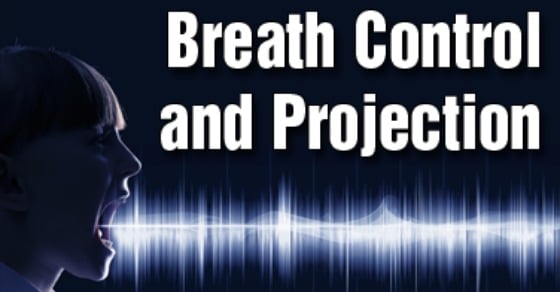Horror Movie 101: Failing Can Be Deadly by Steven Stack is a chilling mix of horror and humor - perfect for student performers and the spooky season! 👻
Projecting Your Voice Without Yelling
Breath Control and Projection are critical skills for an actor, but they’re just as critical for drama teachers. The trick is to speak loudly and project without yelling. We often tell our students to project, but what about us? Think about how many times you have to raise your voice in a day. Do you project or do you yell?
Why do we need to project instead of yell?
Yelling uses vocal cords, which can get damaged if overused. Projection uses breath from the diaphragm and uses air to create the volume you want.
How do I know if I’m yelling or projecting?
If your diaphragm is not doing the work of creating volume, your vocal cords are – something has to do the work. If you keep yelling, your throat will start to feel sore. Projection has a depth to the sound. It tends to have a slightly deeper pitch and a rounder, more complex sound. Yelling sounds flat with a higher pitch.
How do I learn to project my voice?
Breathing from the diaphragm is key to learning how to project. The ‘ha’ exercise is one that works very well to practice. You take a big breath in – expanding your lungs down and your abdomen out – and then you force all that air out on a “ha.” This exercise is built for projection. You are using all your air at once on one sound so you can force that sound out and be really loud with it. Using that much air sends your sound out far and that’s what you’re trying to do.
Exercise: Visualization Technique
We can also use visualization to improve our projection. Since we are trying to get our sound to travel away from us, it can help to pick a spot on the wall opposite us and visualize your sound hitting that spot on the wall. It will let you focus on how far you want your sound to go.
1. Find several different-sized spaces. It might be a large room in which you can stand close, and then further away from a wall.
2. Find something to say. It might be a random sentence or you can use the list in the PDF download (see below) for ideas.
3. Stand close to the wall (or in a small space) and speak. Ask yourself:
a) Does the sound echo back? You should hear some echo, but not too much – enough to ensure you are being heard but not overly loud.
4. Once you have determined how loud you need to be in the space you’re in, look at how much air you use to speak at that volume. Keep track of how big of a breath you take in and how much air you let out.
5. Practice saying your phrase over and over until you’re sure you know how much air you need to be heard in the size space that you’re in.
6. Then, you move to a bigger space and repeat the exercise.
Soon yelling will be a thing of the past!
If you want to learn more about Breath Control and Projection – be sure to check out my course on the Drama Teacher Academy: The course covers what breath control and projection are, how to breathe from your diaphragm and speak loudly without yelling, and how to teach these skills to your students.



